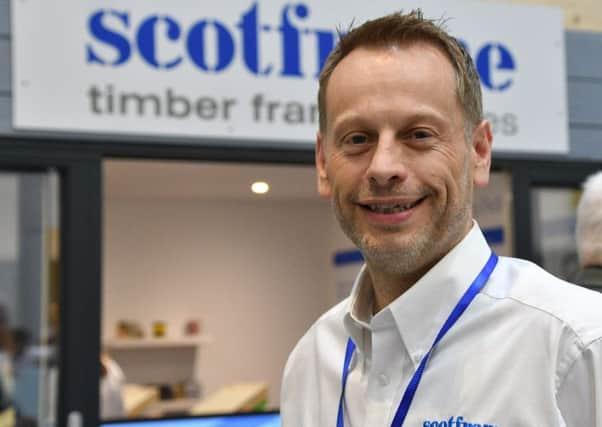Comment: Eco-friendly '˜fabric first' construction is building momentum


Sustainable building used to be the exception rather than the rule, but shifting buyer attitudes are forcing housebuilders to act. New research from the NHBC Foundation and Savills, based on the views of more than 5,400 new-build homebuyers, suggests that energy efficiency is one of seven top priorities that influence the choice of property – right up there with the more traditional considerations like location and quality of the neighbourhood.
If they want to stay competitive, housebuilders now need to consider how to appeal to budget-conscious buyers who literally don’t have money to burn on fuel bills. To meet carbon reduction targets, building regulations across the UK are also introducing stricter standards. Architects, builders and developers should therefore think about long-term energy efficiency measures from the start of a project.
Advertisement
Hide AdAdvertisement
Hide AdOne way they could do this is by adopting what’s known as a “fabric first” approach to building design. Those of us in the structural timber sector have championed this method for years, but it seems the rest of the construction industry is beginning to catch up. Fabric first prioritises the insulation and airtightness of the building over using more costly renewable energy or heating systems, which can lead to significant cost savings over a home’s lifetime.
Fabric first buildings minimise the need for energy consumption in several ways. Firstly, they take advantage of natural sunlight to warm the building up, using strategically placed openings and shadings. Secondly, because they are well-insulated and constructed in a way that maximises airtightness and reduces draughts, they keep hold of that warm air. If, like this summer, it gets too warm, these buildings reduce the need for air conditioning through clever use of natural ventilation.
A fabric first approach is generally considered more sustainable than renewable energy systems, like solar panels, or energy-saving technology, such as smart home gadgets. This is partly because it doesn’t require the occupant to master complicated new tech or adjust their energy consumption habits; the building does the work for them. Also, a building’s fabric can’t be easily tampered with by occupants, so it will continue to perform as intended for decades. By using fabric first, housebuilders are “future-proofing” their designs, ensuring they are still applicable as technology advances and more stringent building standards are introduced.
Fabric first buildings can be constructed offsite, with the associated advantages of higher quality, increased speed, reduced labour costs and environmental benefits. The UK government has recently made a significant effort to promote the benefits of offsite construction.
There are numerous other advantages to fabric first. It doesn’t require maintenance because, once the house is built, it’s job done. Conversely, the long-term need for regular upkeep and cleaning of renewable tech like solar panels could be unattractive to many buyers, along with the effect of panels on a property’s appearance. Solar panels are only suitable for selected homes which are orientated favourably to catch maximum sunlight, and have appropriate roof space, while fabric first principles can be applied to every home.
The great news for housebuilders is that if an integrated building system is used, a fabric first approach is not necessarily more expensive or time consuming. So, why not future-proof your product by building in energy efficiency from the outset of your project, rather than as an afterthought? It’s a win-win for both housebuilder and customer.
- Malcolm Thomson, sales director, Scotframe.